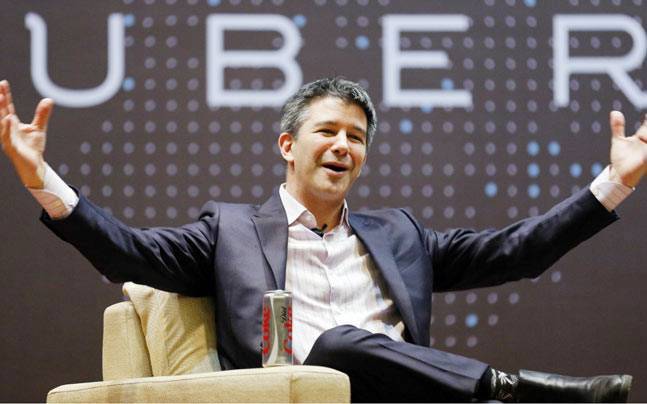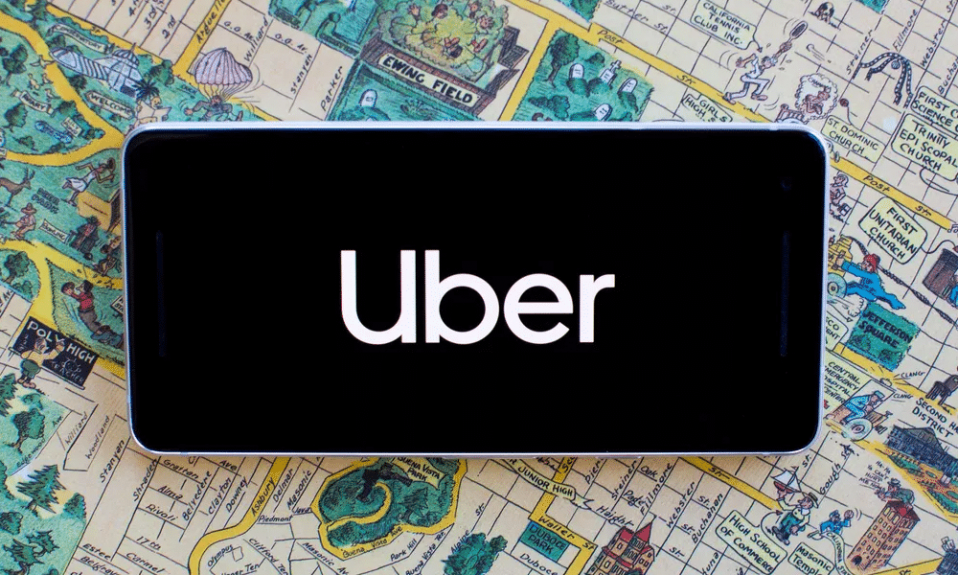Uber is a transportation network company (TNC) that was founded in 2009 by Travis Kalanick and Garrett Camp in San Francisco, California. The company operates a ride-sharing platform that connects passengers with drivers who use their personal vehicles to provide transportation services.
Uber’s platform allows users to request rides using their mobile app, which then matches them with the nearest available driver. The app also provides users with estimated wait times, driver information, and the ability to track their ride in real-time.
In addition to its ride-sharing service, Uber has expanded its business to include other transportation options, such as Uber Eats, a food delivery service, and Uber Freight, a platform for matching shippers with carriers.
Uber has disrupted the traditional taxi and transportation industry by offering a more convenient and cost-effective alternative to traditional taxi services. The company has expanded rapidly over the years and currently operates in over 900 metropolitan areas worldwide.
However, Uber has faced various legal and regulatory challenges in many of the markets it operates in, including disputes over worker classification, safety concerns, and allegations of unfair competition with traditional taxi services.
Despite these challenges, Uber remains a popular and highly valued company, with a market capitalization of over $60 billion as of April 2023.
Founding History of Uber
Uber was founded in 2009 by Travis Kalanick and Garrett Camp, who were both entrepreneurs based in San Francisco, California. The idea for Uber was born when Camp had trouble hailing a taxi one evening and realized there was a need for a more reliable and efficient way to get around the city.

Together, Kalanick and Camp created UberCab, which was originally intended to be a luxury ride service that would allow users to request and pay for high-end cars using their mobile phones. The initial idea was inspired by the success of private car services in Paris and other European cities.
The UberCab service launched in June 2010 in San Francisco with a small fleet of black cars. The service quickly gained popularity among tech-savvy city dwellers who appreciated the convenience and reliability of the platform.
However, the company soon encountered legal and regulatory challenges from traditional taxi services and local government authorities who argued that Uber was operating outside of the existing regulatory framework for transportation services. Uber responded by hiring lobbyists and lawyers to help navigate the complex regulatory landscape and build support for their service.
In 2011, Uber expanded its service to New York City, and the company continued to grow rapidly over the next few years, expanding to other cities in the United States and around the world.
In 2013, Uber changed its name from UberCab to simply “Uber” and began to focus more on its ride-sharing service, which allowed drivers to use their personal vehicles to provide rides to users. This new model proved to be highly successful, and the company began to rapidly expand its operations.
Over the years, Uber has faced a number of controversies, including legal and regulatory challenges, allegations of unfair competition with traditional taxi services, and concerns about the safety of passengers and drivers
Business Model of Uber
Uber is a technology platform that connects riders with drivers, allowing users to request rides through the Uber app on their smartphone. The company has disrupted the traditional taxi industry by providing a more convenient and efficient alternative to traditional taxi services.
Uber’s business model is based on the sharing economy, where individuals can earn money by sharing their underutilized assets, in this case their cars. The platform allows drivers to sign up and start earning money by providing rides to users, who are charged based on the distance and duration of the ride.
Here are the key elements of Uber’s business model:
Technology Platform: Uber’s platform connects drivers and riders through its mobile app. The app allows users to request rides, track their driver, and pay for the ride without the need for cash.
Dynamic Pricing: Uber uses a dynamic pricing model, known as “surge pricing,” which adjusts the cost of a ride based on supply and demand. During peak times when demand for rides is high, prices increase to incentivize more drivers to get on the road.
Driver Network: Uber’s driver network is a key part of its business model. Drivers can sign up to the platform and start earning money by providing rides. The company also offers incentives and bonuses to drivers to keep them motivated and engaged.
User Experience: Uber places a strong emphasis on user experience, providing riders with a convenient and hassle-free way to get around. The company uses data and analytics to improve its service and personalize the user experience.
Expansion: Uber has expanded rapidly into new markets and has diversified its offerings beyond its original ride-hailing service. The company now offers food delivery through Uber Eats, and has invested in other transportation options such as electric bikes and scooters.
Partnership and integration: Uber partners with different businesses to expand its offerings and improve the customer experience. For example, the company has partnered with airlines to allow users to book rides directly from their airline’s app.
In summary, Uber’s business model is centered around its technology platform that connects riders with drivers and its emphasis on user experience. The company’s success is built on its ability to leverage the sharing economy to provide a convenient and efficient transportation service to users around the world.
Revenue model of Uber – How does Uber make money?
Uber’s revenue model is based on a commission-based system, where it takes a percentage of the total fare charged to the rider for every trip completed through its platform. The company’s commission percentage varies depending on the location, but typically ranges from 20-30% of the total fare.
Here are some of the key elements of Uber’s revenue model:
Commission: As mentioned, Uber’s primary revenue stream comes from taking a commission on each ride. The company’s commission percentage varies by location and can range from 20-30% of the total fare charged to the rider.
Surge Pricing: During periods of high demand, Uber may implement surge pricing, which increases the fare charged to the rider. This surge pricing incentivizes more drivers to get on the road, ensuring that riders can get a ride when they need it. Surge pricing also means that Uber can earn a higher commission during times of high demand.
Fees: In addition to the commission, Uber also charges various fees to both riders and drivers. For example, the company may charge a booking fee or an airport fee to riders, or a service fee to drivers.
Subscription Services: Uber offers a subscription service called Uber Pass, which provides users with discounts on rides and other benefits. The company generates revenue through the subscription fee paid by users.
Other Services: In addition to its core ride-hailing service, Uber has expanded into other areas such as food delivery through Uber Eats and freight shipping through Uber Freight. These services generate revenue through fees charged to restaurants, riders, and other partners.
Advertising: Uber also generates revenue through advertising on its platform. The company allows businesses to advertise on its app, generating revenue from advertising fees.
Overall, Uber’s revenue model is centered around taking a commission on each ride completed through its platform. The company has also diversified its revenue streams by expanding into other areas such as food delivery and freight shipping, as well as through its subscription service and advertising.
Challenges faced by Uber
Uber, like any other company, faces a range of challenges that can affect its operations, financial performance, and overall success. Here are some of the key challenges that Uber is currently facing:
Regulatory challenges: One of the biggest challenges that Uber has faced in recent years is regulatory challenges. Governments and regulators in many cities and countries have pushed back against the company, arguing that its business model doesn’t comply with existing laws and regulations. This has led to bans and restrictions on the company’s operations in some locations.
Legal challenges: Uber has also faced a number of legal challenges in recent years. For example, the company has been sued by drivers who claim they should be classified as employees rather than independent contractors. Uber has also faced lawsuits related to safety concerns, such as allegations that it didn’t do enough to prevent sexual harassment and assault by drivers.
Competitive pressure: Uber operates in a highly competitive industry, with rivals such as Lyft and Didi Chuxing vying for market share. Some of these competitors have significant advantages, such as strong relationships with local governments and transportation companies.
Safety concerns: Safety is a major concern for Uber, both in terms of rider safety and driver safety. The company has faced criticism for not doing enough to protect riders and drivers, and has made a number of changes to its policies and procedures in response to these concerns.
Financial performance: Despite its high valuation, Uber has struggled to turn a profit. The company has faced pressure from investors to demonstrate that it can achieve sustainable profitability, and has made a number of changes to its business model and cost structure in an attempt to do so.
COVID-19 pandemic: Like many companies, Uber has been impacted by the COVID-19 pandemic. The company’s ride-hailing business has been significantly impacted by lockdowns and restrictions on travel, and the pandemic has also raised concerns about rider and driver safety.
Overall, Uber faces a range of challenges that could impact its long-term success. The company will need to navigate these challenges carefully in order to continue to grow and thrive in the highly competitive ride-hailing market.
Why has not Uber turned profitable yet?
Uber’s revenue model is based on taking a commission from drivers’ earnings for each ride. The commission fee ranges from 25% to 40% depending on the city and type of ride. The rest of the earnings go to the driver. This revenue model has been successful in generating revenue for Uber, with the company reporting $11.3 billion in revenue in 2019.
However, Uber has not yet turned a profit despite its high revenue. There are several reasons for this:
Heavy investment in expansion: Uber has been investing heavily in expanding its services to new markets around the world. This has involved significant expenses related to marketing, recruitment, and infrastructure development. Although this investment has helped the company to grow rapidly, it has also been costly and has contributed to the company’s losses.
Driver incentives: To encourage more drivers to join and remain active on the platform, Uber has offered a variety of incentives such as sign-up bonuses, referral bonuses, and guaranteed earnings. These incentives can be costly, and can eat into the company’s profits.
Price competition: Uber faces stiff competition from other ride-hailing services such as Lyft, Didi Chuxing, and Grab, which have all offered low prices to attract riders. This price competition has made it difficult for Uber to generate higher profits from its services.
Regulatory challenges: Uber has faced a number of regulatory challenges in various cities and countries around the world. These challenges have led to legal fees and fines, as well as costs related to compliance with local regulations.
High operational costs: Uber has high operational costs related to maintaining its fleet of vehicles, developing and maintaining its app, and ensuring rider and driver safety. These costs have contributed to the company’s ongoing losses.
COVID-19 pandemic: The COVID-19 pandemic has had a significant impact on Uber’s business. Lockdowns, travel restrictions, and social distancing measures have led to a significant decline in demand for ride-hailing services. This has resulted in a sharp drop in revenue for the company.
Overall, Uber’s revenue model has been successful in generating revenue, but the company has not yet turned a profit due to a combination of factors, including heavy investment in expansion, driver incentives, price competition, regulatory challenges, high operational costs, and the impact of the COVID-19 pandemic. The company will need to address these challenges in order to achieve profitability in the future.
Growth Strategy of Uber
Uber has pursued a range of growth strategies since its inception. Some of the key growth strategies adopted by Uber are:
Geographic expansion: One of the primary growth strategies for Uber has been geographic expansion. The company has expanded its operations to over 900 metropolitan areas in 69 countries, making it one of the largest ride-hailing services in the world. Uber has also entered into partnerships with local ride-hailing services in various countries, allowing it to expand its reach even further.
Diversification of services: Uber has also diversified its services beyond ride-hailing. The company now offers a range of services, including Uber Eats, Uber Freight, and Uber for Business. These services have helped the company to expand its revenue streams and reduce its dependence on ride-hailing.
Acquisition of competitors: Another growth strategy for Uber has been the acquisition of competitors. The company has acquired several smaller ride-hailing services in various countries, including Careem in the Middle East, Grab in Southeast Asia, and Cornershop in Latin America. These acquisitions have allowed Uber to expand its reach and increase its market share in these regions.
Partnerships with other companies: Uber has also entered into partnerships with other companies to expand its services. For example, the company has partnered with public transportation providers in various cities to offer integrated transportation options to users. Uber has also partnered with rental car companies to allow users to rent cars directly through the Uber app.
Development of new technologies: Uber has invested heavily in the development of new technologies, including autonomous vehicles and flying taxis. While these technologies are still in the early stages of development, they have the potential to significantly disrupt the transportation industry and provide new growth opportunities for Uber in the future.
Overall, Uber’s growth strategy has been focused on expanding its reach, diversifying its services, and investing in new technologies. These strategies have helped the company to become one of the largest ride-hailing services in the world and to expand its revenue streams beyond ride-hailing.
Competitors of Uber in different markets
Uber faces competition from various ride-hailing services in different markets around the world. Some of the key competitors of Uber in different markets are:
Lyft: Lyft is Uber’s main competitor in the United States. The company was founded in 2012 and operates in over 600 cities across the country. Lyft has a similar business model to Uber, with drivers using their own vehicles to provide rides to customers. The company is known for offering more affordable prices than Uber and has a strong focus on customer service.
Didi Chuxing: Didi Chuxing is the largest ride-hailing service in China, with over 550 million users and a market share of around 90%. The company was founded in 2012 and provides a range of services, including taxis, private cars, and carpooling. Didi Chuxing has received significant investment from companies such as Apple and Softbank and is expanding into other markets, including Latin America and Australia.
Ola: Ola is Uber’s main competitor in India, with over 200 million users and a market share of around 60%. The company was founded in 2011 and provides a range of services, including taxis, private cars, and auto-rickshaws. Ola has been expanding rapidly, with services now available in over 250 cities across India, as well as in Australia, New Zealand, and the United Kingdom.
Grab: Grab is a ride-hailing service that operates in Southeast Asia, with services available in countries such as Singapore, Malaysia, and Indonesia. The company was founded in 2012 and has a market share of around 80% in the region. Grab provides a range of services, including taxis, private cars, and motorbikes, and has expanded into other services such as food delivery and mobile payments.
Bolt: Bolt is a ride-hailing service that operates in Europe, Africa, and parts of Asia. The company was founded in 2013 and provides a range of services, including taxis, private cars, and scooters. Bolt is known for offering more affordable prices than Uber and has a strong focus on driver satisfaction.
DiDi Australia: DiDi Australia is a ride-hailing service that operates in Australia. The company was founded in 2018 and offers services in Melbourne, Sydney, Brisbane, the Gold Coast, Adelaide, and Perth. DiDi Australia is a subsidiary of Didi Chuxing and offers similar services to Uber, including taxis and private cars.
Overall, Uber faces stiff competition from a range of ride-hailing services in different markets around the world. These competitors offer similar services to Uber but may differentiate themselves through lower prices, better customer service, or other unique features.
Read more about Uber here – Uber – Evolving The Way The World Moves
To read more content like this, subscribe to our newsletter



